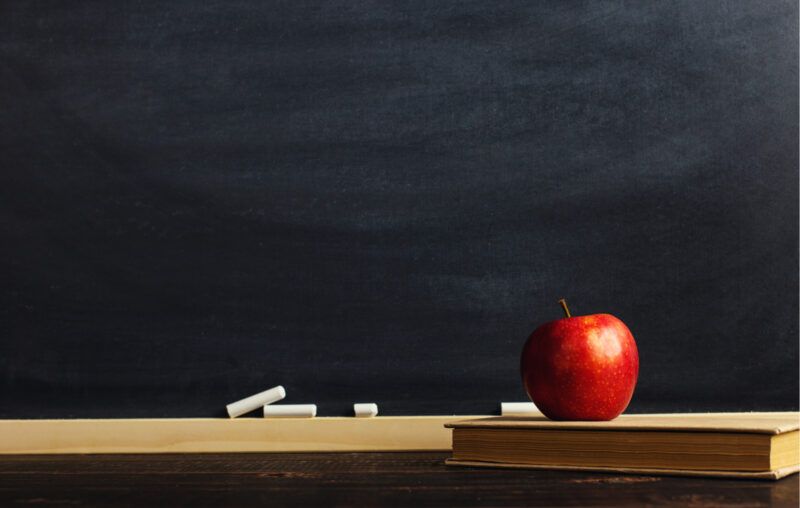The Teachers Unions are Keeping the Schools Closed

On Monday, December 7th, North Carolina teachers did not show up in their classrooms, but instead logged onto Facebook and posted photographs of themselves dressed in red with the caption, “A show of solidarity with our colleagues.” This gesture was in defiance of the Orange County Superintendent’s call for teachers to return to schools and a way to protest school openings, on the grounds that it was too dangerous for teachers to do their jobs in person because of the coronavirus pandemic.
The local teacher’s union, Orange County Association of Educators, supported the movement in a Facebook post saying, “We have yet to hear sufficient rationale for how teaching from our classrooms helps our students, who can tell when our morale is low and our stress levels are high.”
Schools across the country – in New York City, DC suburbs, Pittsburgh, and so on – are closing again for fear that a new wave of infections will occur from holiday travel and more people staying indoors. In Orange County, the teachers are still unwilling to hold in-person classes even though the county is seeing a low positive test rate of 3.1%, well below the state’s positive test rate goal of 5%.
It would be reasonable for teachers to oppose schools being open if Covid-19 posed a significant risk to students. However, we knew early on that the science demonstrates there is virtually no risk of severe illness or death to children. On April 22nd, a study from The Journal of the American Medical Association (JAMA) found:
“Most children with COVID-19 presented with mild symptoms, if any, generally required supportive care only, and typically had a good prognosis and recovered within 1 to 2 weeks.”
Likewise, two months later, a study from the Lancet stated: “COVID-19 is generally a mild disease in children, including infants.”
In the US alone, only 254 young people under the age of 17 have died of Covid-19. This number accounts for roughly 0.085% percent of Covid-19 deaths in the United States.
At the same time, school closures cause great harm to children and teenagers, especially in the long term.
School districts across the country are observing much higher class failure rates compared to previous years. Salt Lake City schools reported the percentage of students falling below grade level jumped from 23 percent in 2019 to 32 percent in the first trimester of 2020. In Fairfax County, Virginia, the number of students who have two or more failing grades has increased by 83%. Significant evidence shows that a truncated school year supplemented with online learning is vastly inferior to the education children get in-person. Virtual learning is particularly harmful to students from poor socioeconomic backgrounds who do not have sufficient resources to support their learning.
Not only are students failing more classes, but enrollment is low. A survey of school administrators found that about 50 percent of respondents from Pre-K up to high school experienced either a large or small decline in enrollment, with Pre-K seeing the biggest decline of 62 percent. On a global scale, the United Nations projects that 24 million children are in danger of dropping out of school as a result of lockdowns and school closures. Lower enrollment may also be attributed to other factors, such as more parents choosing to homeschool their children since schools are closed.
In addition to the direct effects of school closures – educational deprivation – there are documented, serious unintended consequences. Child abuse is going unreported, because school personnel are the main source of reporting child maltreatment. Closures have severed the in-person interaction of children and teachers, putting children at risk. A National Institutes of Health (NIH) article studied Florida county-level data of maltreatment reports, finding 27% (15,000) fewer than expected in March and April alone.
The problem is not only that school personnel cannot observe children, meaning that abuse is going unnoticed. Many parents have lost their jobs due to lockdowns, creating enormous stress within a household that ultimately leads to child maltreatment. This is not mere speculation but is substantiated by the evidence: another NIH article concluded that “job loss during the COVID-19 pandemic is a significant risk factor for child maltreatment.” Thus, not only are child maltreatment cases going underreported, but they are increasing as more parents are dealing with the stress of job loss.
School closures also prevent the social interaction that is vital to children’s development, leading to increased feelings of isolation, depression, and anxiety. According to the Centers for Disease Control (CDC), between January and October of 2020, the number of mental health-related hospital visits increased by 24% for 5 to 11 year-olds and by 31% for 12 to 17 year-olds.
School closures and other aspects of lockdowns have not only halted young people’s social interactions, but prevented doctor visits and participation in life milestones: school plays, proms, and graduations. The profusion of fear inundating society from media outlets and political figures leads children to feeling a loss of security and routine, which is extremely harmful to their psychological health.
Overall, a JAMA study shed light on the massive destruction that school closures have on children. The authors estimated a decrease of 5.53 million years of life for children due to school closures, owing to lower income, reduced educational attainment, and worse health outcomes.
Despite teachers’ worry about transmission in school, contracting the virus in schools is a low risk. An article from Nature, citing multiple studies, indicates that spread among children in schools is low. In fact, children are less likely to transmit the virus to adults (parents, staff members) than adults would infect each other.
There are plenty of countries – England, South Korea, and Italy, for example – who also opened schools and saw low transmission in schools. In any event, at-risk teachers could be accommodated by allowing them to help their colleagues from home, for instance planning classes or grading papers.
The data makes apparent that school closures are not a matter of public health. Instead, lobbying groups – who sway government officials to support their special interests – are central to the matter. They are teachers unions.
In a study aimed at understanding the external influences of school closures during the pandemic, Corey DeAngelis from Reason Foundation and Christos Makridis from MIT found teachers unions to be a significant factor. They discovered that school districts are less likely to reopen when there is a strong union presence.
Furthermore, they “generally find that school district reopening decisions are unrelated to COVID-19 risk as measured by recent cases per capita and deaths per capita in the county.” Other studies have also found that school closures are tied to the presence of teachers unions, as opposed to the high rates of Covid-19, which one would expect.
While much of the public believes that politicians have their constituents’ best interest in mind, politicians are often acting at the behest of labor unions and other lobbying groups, which have been shown to sway them in ways that benefit their group and not the community as a whole. Teachers unions are incentivized to lobby for themselves and reap high benefits, but their petitions ultimately lead to unintended consequences for children and their parents.
Nothing provides more evidence for the devastation of lockdowns than school closures. In the midst of our focus on complete disease avoidance, we have failed to acknowledge an extremely important vulnerable group. Children. Though they may seem quiet, they are calling for our help.
At this point, confusion or debate over school openings is completely unfounded. We knew of the extremely low risk of Covid-19 for children in April.











